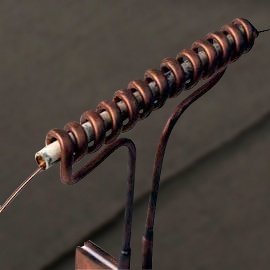Precise and easy control

Annealing is a process where heat is applied to a material to increase its malleability and make it more workable. Or simply put, a metal is typically heated to a specified temperature and cooled, which results in a softened material that is more easily formed. Induction is one heating method that is commonly used for annealing.
The annealing process causes alterations in both ductility and hardness. The process is intended to make materials more workable and malleable. With this in mind, the process is most often used to soften a metal for cold working, enhance electrical conductivity, and improve machinability. Restoring ductility is also a desired effect.
The annealing process also reduces or eliminates the risk of cracking and breakage during cold working. Cold working can cause metal to become hardened to the degree where they'll crack after a certain point, but by annealing the metals beforehand, they can undergo any amount of cold working without risk of cracking and other mechanical stress.
Video: Annealing application examples
Annealing process
Common problems
The optimum tempering temperature depends on the properties of the material and the degree of hardness adjustment desired.
Experimenting with small amounts is also necessary to confirm optimal levels.
Once suitable parameters have been determined, the process should be repeated with precision.
During heating and cooling, a temperature gradient exists between the outside and inside of the metal.
If the temperature change is too large, this temperature gradient can cause internal warping or cracking.
Tips for good annealing
- Time is of the essence anyway. The actual annealing time should be long enough to allow full denaturation.
- Surface oxidation and scaling can be prevented or mitigated by relatively low temperatures or oxygen-free atmospheric induction heating.
Advantages of IH
- Provides non-contact, energy-efficient heating in a short time
- Provides high-precision production without variations in extremely limited areas, regardless of the metallurgical properties of each material.
- Closed-loop control using a thermometer or temperature sensor keeps the temperature constant to within a few degrees.
- Rapid heating is possible and a highly reproducible temperature cycle can be obtained.
